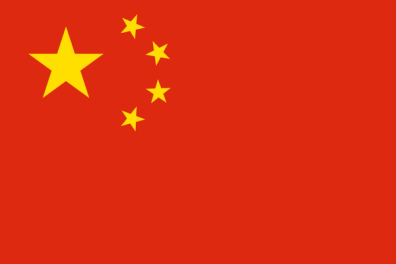Donate to Support Supercluster
Your support makes the Astronaut Database and Launch Tracker possible, and keeps all Supercluster content free.
SUPPORTSupercluster on Patreon
Your support makes the Astronaut Database and Launch Tracker possible, and keeps all Supercluster content free.
SUPPORTThis goes
to space
Unknown Payload
The payload for this mission has not been revealed.

On this
rocket
Hyperbola-1
Hyperbola-1 is China’s first privately developed solid-fueled orbital launch vehicle, designed to provide cost-effective and rapid access to space for small satellites. Developed by iSpace, Hyperbola-1 successfully completed its maiden flight in July 2019, becoming the first private Chinese rocket to reach orbit.
Specs
Height: 24 m (79 ft)
Diameter: 1.4 m (4 ft 7 in)
Mass: 42,000 kg (93,000 lb)
Stages: 4
Payload to Low Earth Orbit
Mass: 520 kg (1,150 lb)
Payload to Sun-Synchronous Orbit (SSO)
Mass: 300 kg (660 lb)
The rocket has a payload capacity designed for the small satellite launch market, capable of delivering payloads to low Earth orbit (LEO) and sun-synchronous orbit (SSO). It supports commercial, scientific, and government missions, particularly those involving small satellite constellations. Due to its solid-fuel design, the rocket cannot be throttled or restarted once ignited, but its four-stage configuration allows it to reach orbit effectively. The vehicle’s size and mass provide flexibility in launch site selection and help reduce launch costs.
Hyperbola-1 is among the privately developed launch vehicles entering the market globally, focusing on cost-effective solutions for small payloads. Although it currently employs solid propulsion, the developer iSpace has plans to develop larger rockets, potentially including liquid-fueled models.

From this
launch site
Jiuquan Satellite Launch Center, People’s Republic of China
Jiuquan Satellite Launch Center is a Chinese space vehicle launch facility (spaceport) located in the Gobi Desert, Inner Mongolia. It is part of the Dongfeng Aerospace City (Base 10). Although the facility is geographically located within Ejin Banner of Inner Mongolia's Alxa League, it is named after the nearest city, Jiuquan in Gansu Province. The launch center straddles both sides of the Ruo Shui river.
It was founded in 1958, the first of China's four spaceports. As with all Chinese launch facilities, it is remote and generally closed to foreigners.
Jiuquan Satellite Launch Center is usually used to launch vehicles into lower and medium orbits with large orbital inclination angles, as well as testing medium to long-range missiles. Its facilities are state of the art and provide support to every phase of a satellite launch campaign. The site includes the Technical Center, the Launch Complex, the Launch Control Center, the Mission Command and Control Center and various other logistical support systems.
The center covers 2800 km (1739.8 miles) and may have housing for as many as 20,000 people. The facilities and launch support equipment were likely modelled on Soviet counterparts and the Soviet Union likely provided technical support to Jiuquan.
The launch center has been the focus of many of China's ventures into space, including their first satellite Dong Fang Hong I in 1970, and their first crewed space mission, Shenzhou 5 on 15 October 2003. As of 2021, all Chinese crewed space flights, meaning all flights in the Shenzhou program including crewed flights to the Tiangong space station, have launched from Jiuquan.
In August 2016, China launched the first quantum communication satellite, the "Quantum Experiments at Space Scale", from the center.
In August 2018, Chinese private rocket manufacturing startups i-Space and OneSpace launched sub-orbital rockets from the center. On July 25, 2019, the first Chinese private orbital launch took place from Jiuquan as I-Space launched their Hyperbola-1 rocket.

Here's where to view Hyperbola 1
Viewing Sites
Know Before You Go
Jiuquan Satellite Launch Center is a Chinese spaceport located in the Gobi desert, about 1,600 km from Beijing. It is part of the Dongfeng Aerospace City
Another Launch
See All LaunchesGET THE SUPERCLUSTER APP
THE SUPERCLUSTER PODCAST
A podcast exploring the amazing milestones that changed space history, the wildest ideas that drive our future, and every development in this new Golden Age of Space.
Donate to support
Your support makes the Astronaut Database and Launch Tracker possible, and keeps all Supercluster content free.
SupportCOPYRIGHT 2021 SUPERCLUSTER LLC

